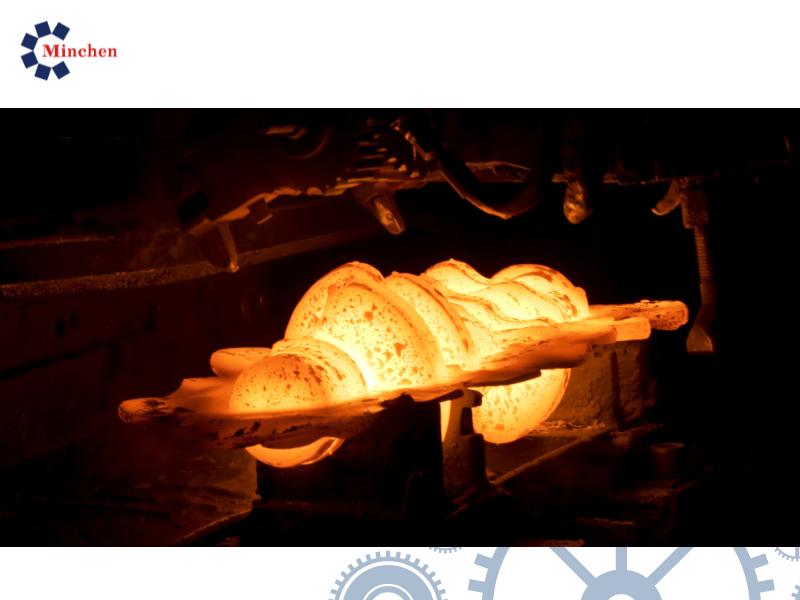Comparing Gear Manufacturing Methods: Forging vs. Casting

Introduction:
Gears are fundamental components of mechanical transmission systems, directly affecting the performance and lifespan of the entire system. Among the various manufacturing methods for gears, forging and casting are two common techniques, each with distinct characteristics. This article will introduce these two methods in detail and compare their advantages and disadvantages, helping readers better understand and choose the appropriate gear manufacturing process.
Forging:
Forging is a manufacturing process that involves heating metal to high temperatures and applying pressure to shape it. This process alters the metal's shape through mechanical force while improving its internal structure, increasing the material's strength and toughness.
Advantages of Forged Gears:
- High Strength: The forging process refines the metal's grain structure, resulting in a denser internal structure that enhances material strength and durability.
- Good Toughness: Forged gears exhibit excellent toughness, making them capable of withstanding high impact loads.
- High Precision: Modern forging techniques can produce gears with high precision and superior surface quality.
Disadvantages of Forged Gears:
- Higher Cost: Forging equipment and dies are relatively expensive, and the process is more complex.
- Material Waste: The forging process can generate more material waste.
Casting:
Casting is a manufacturing process where molten metal is poured into a mold and allowed to cool and solidify into the desired shape. This method is suitable for producing complex shapes and larger gears.
Advantages of Cast Gears:
- Lower Cost: Casting equipment and molds are generally less expensive, making the process more cost-effective, especially for large production runs.
- High Flexibility: Capable of producing gears with complex shapes and varying sizes.
- Efficient Material Use: Casting generates less material waste compared to forging.
Disadvantages of Cast Gears:
- Lower Strength: The internal structure of cast metal is more porous, making cast gears less strong and durable compared to forged gears.
- Lower Precision: Cast gears typically have lower precision and surface quality compared to forged gears.
Comparison and Trends:
In modern gear manufacturing, both forging and casting have their respective applications. According to market data, forged gears are more common in high-load, high-precision applications, such as aerospace and automotive transmissions, due to their superior strength and precision. On the other hand, cast gears are used in applications where complex shapes are required, and the load is relatively lower, such as general machinery and large industrial equipment.
According to a report by Mordor Intelligence, forged gears account for more than 60% of the global gear market. This dominance is primarily due to the advantages of forged gears in high-load and high-precision applications. However, cast gears remain vital in specific applications, particularly where cost-effectiveness and large-scale production are essential.
Application of Forged Gears
Forged gears are known for their high strength, durability, and precision, making them suitable for a variety of demanding applications. Here are some common applications of forged gears:
- Transmission Systems: Forged gears are used in the transmission systems of cars and trucks, where high strength and durability are crucial for handling the torque and forces involved.
- Differentials: These gears are essential in automotive differentials, providing reliable power transmission and handling varying loads.
- Engine Timing Systems: Forged gears ensure precise timing and synchronization in engine components.
Aerospace Industry:
- Aircraft Engines: Forged gears are used in aircraft engines for their ability to withstand high temperatures and stresses.
- Landing Gear Systems: The high strength and toughness of forged gears make them ideal for the heavy loads and impacts associated with landing gear operations.
- Helicopter Transmissions: Forged gears are used in helicopter transmission systems, which require high reliability and precision.
Industrial Machinery:
- Heavy Machinery: Forged gears are used in construction equipment, such as bulldozers and excavators, where they must handle significant stress and wear.
- Mining Equipment: These gears are crucial in mining machinery, which operates in harsh environments and requires high durability.
- Cranes and Lifting Equipment: Forged gears provide the strength and reliability needed for cranes and other lifting equipment.
Power generation:
- Wind Turbines: Forged gears are used in the gearboxes of wind turbines, where they must withstand high loads and variable speeds.
- Hydroelectric Plants: In hydroelectric plants, forged gears are used in the turbines and generators to ensure efficient power transmission.
Railway Systems:
- Locomotives: Forged gears are used in the transmission systems of locomotives, providing the necessary strength to handle heavy loads and high speeds.
- Track Maintenance Equipment: Forged gears ensure the durability and reliability of equipment used for maintaining railway tracks.
- Ship Propulsion Systems: Forged gears are used in the propulsion systems of ships, where they must handle high torques and variable operating conditions.
- Offshore Drilling: In offshore drilling rigs, forged gears are essential for the reliable operation of drilling and extraction equipment.
- Tractors: Forged gears are used in tractor transmissions and power take-off systems, providing the necessary strength for heavy-duty agricultural work.
- Combine Harvesters: These gears ensure reliable operation of the complex machinery in combine harvesters.
Conclusion:
In gear manufacturing, both forging and casting have distinct advantages and disadvantages. The choice of manufacturing process should be based on the specific application requirements. Forged gears, with their high strength and precision, hold a significant market position, while cast gears are indispensable for their cost efficiency and flexibility in certain applications. As technology advances, both methods will continue to play crucial roles in gear manufacturing.
For more information on high-quality gear manufacturing, contact Minchen Gear Co., Ltd., a leader in precision gear production.

